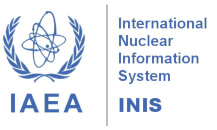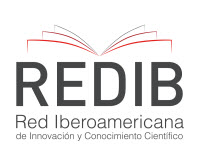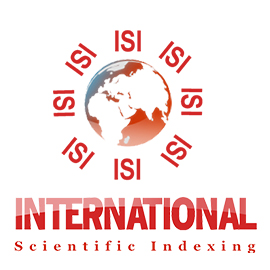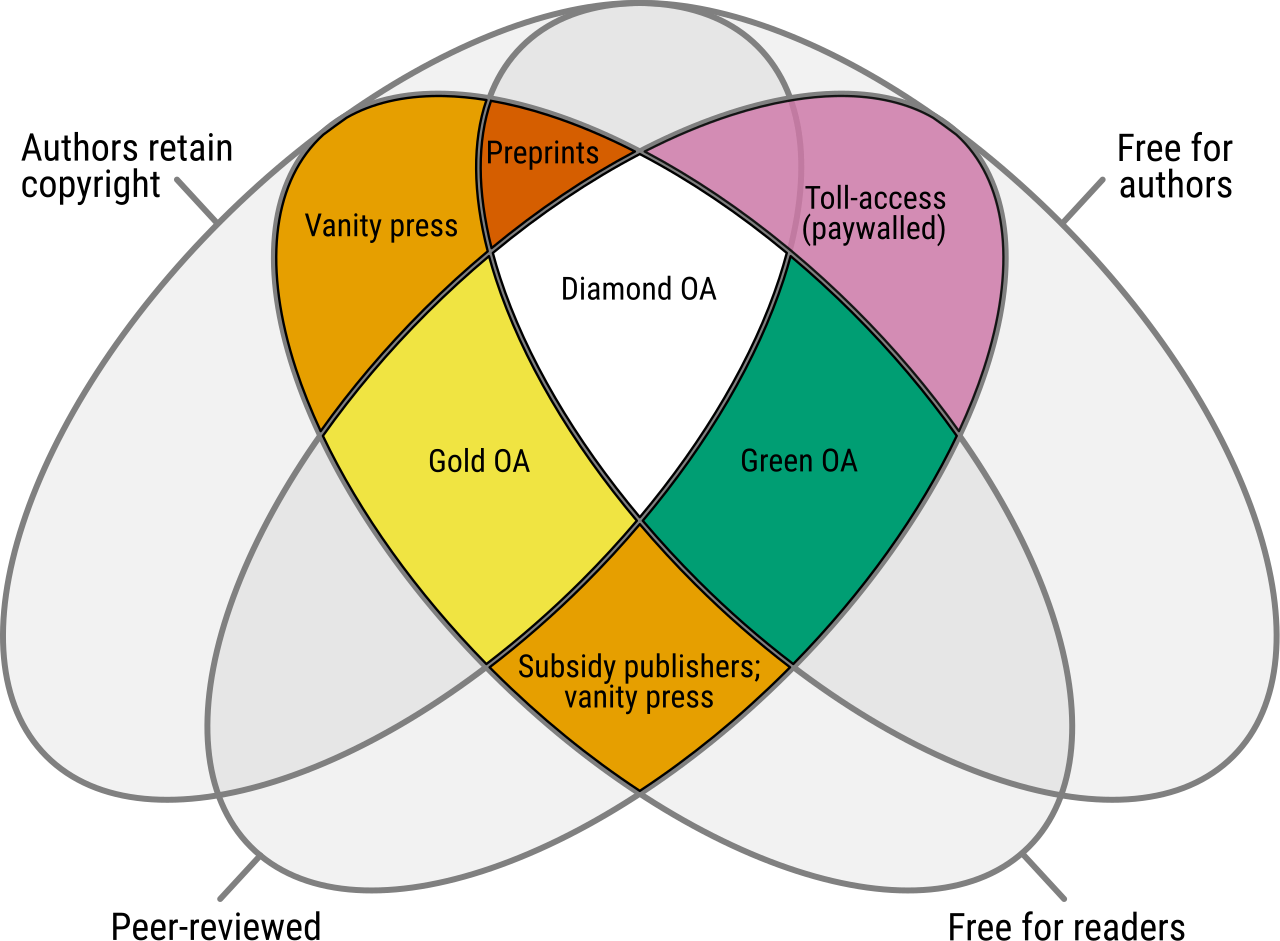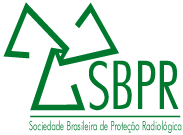Avaliação de ETR no Solo em Área de Mineração de Umuahia, Estado de Abia, Sudeste da Nigéria por Análise por Ativação Neutrônica Instrumental (INAA)
DOI:
https://doi.org/10.15392/2319-0612.2024.2336Palavras-chave:
elementos de terras raras, solo de mineração de argila, Umuahia, Nigéria, geoacumulaçãoResumo
Neste trabalho, o objetivo principal foi examinar a concentração e o padrão de distribuição de elementos terras raras (ETR) no solo de Umuahia, Estado de Abia, do Sudeste da Nigéria, num local de mineração de argila em comparação com um local não contaminado a aproximadamente 3 km de distância. Os ETR foram determinados por Análise por ativação neutrônica instrumental (INAA) no IPEN, Brasil. A mineralogia principal das amostras foi determinada por difração de raios-X. Foram determinados os seguintes ETR: Ce, Eu, La, Lu, Nd, Sm, Tb e Yb. As amostras de solo da área de mineração apresentam quartzo e caulinita como principais constituintes, com concentrações de ETR comparáveis às da crosta continental superior e do composto de xisto norte-americano. O índice de geoacumulação calculado (IGeo) indica que os ETR têm origem natural e a relação ∑LETR/∑PETR mostra um enriquecimento dos ETR leves em relação aos pesados, em amostras da área de mineração de argila.
Downloads
Referências
SANTANA, M. L. T.; CARVALHO, K. M.; PEIXOTO, A. U. S.; JUNIOR CESAR, M. E.; VAN ES, H. M., CURI, N.; MONTOANI, B. Interactions between Land Use and Soil Type Drive Soil Functions, Highlighting Water Recharge Potential, in the Cantareira System, Southeast of Brazil. Sci Total Environ, v. 903, p. 166125, 2023. DOI: https://doi.org/10.1016/j.scitotenv.2023.166125
MULYONO, A.; SETIAWAN, I.; HIDAYAT, E.; NOVIARDI, R. ‘Distribution and Potential Contamination Assessment of Rare Earth Elements (REE) in Indonesian Volcanic Soil’. Acta Ecol Sin, p. 1-10, 2023. DOI: https://doi.org/10.1016/j.chnaes.2023.05.010
Oladipo, H. J., Tajudeen, Y. A.; Taiwo, E. O.; Muili, A. O.; Yusuf, R. O.; Jimoh, S. A.; Oladipo, M. K.; Oladunjoye, I. O.; Egbewande, O. M.; Sodiq, Y. I.; Ahmed, A. F.; El-Sherbini, M. S. ‘Global Environmental Health Impacts of Rare Earth Metals: Insights for Research and Policy Making in Africa’. Challenges, v. 14(20), p. 1-13, 2023. DOI: https://doi.org/10.3390/challe14020020
ILEVBARE, M. ‘Rare Earth Elements of Ajali Sandstone, SW, Anambra Basin in Nigeria: Implication for Soil Genesis’. J Appl Sci Environ Manag, v. 24(11), p. 1999–2004, 2021. DOI: https://doi.org/10.4314/jasem.v24i11.22
MALHOTRA, N.; HSU, H. S.; LIANG, S. T.; ROLDAN, M. J. M.; LEE, J. S.; GER, T. R.; HSIAO, C. D. An Updated Review of Toxicity Effect of the Rare Earth Elements (REEs) on Aquatic Organisms’. Animals, v. 10(9), p. 1–27, 2020. DOI: https://doi.org/10.3390/ani10091663
HAQUE, N.; HUGHES, A.; LIM, S.; VERNON, C. Rare Earth Elements: Overview of Mining, Mineralogy, Uses, Sustainability and Environmental Impact. Resources, v. 3(4), p. 614–35, 2014. DOI: https://doi.org/10.3390/resources3040614
SOLTANI, F.; ABDOLLAHY, M.; PETERSEN, J.; RAM, R.; KOLEINI, S. M. J.; MORADKHANI, D. Leaching and Recovery of Phosphate and Rare Earth Elements from an Iron-Rich Fluorapatite Concentrate: Part II: Selective Leaching of Calcium and Phosphate and Acid Baking of the Residue’. Hydrometallurgy, v 184, p. 29–38, 2019. DOI: https://doi.org/10.1016/j.hydromet.2018.12.024
ZEPF, V. Rare Earth Elements: What and Where They Are. In: Rare Earth Elements. Springer Theses. Springer, Berlin, Heidelberg, p 11–39, 2013. DOI: https://doi.org/10.1007/978-3-642-35458-8_2
PAGANO, G.; THOMAS, P. J.; NUNZIO, A.; TRIFUOGGI, M. Human Exposures to Rare Earth Elements: Present Knowledge and Research Prospects. Environ Res, v. 171, p. 493–500, 2019. DOI: https://doi.org/10.1016/j.envres.2019.02.004
ELIAS, M. S., AZMAN, M. A.; DAUNG, J. A. D.; HASHIM, A.; LAILI, Z.; OMAR, S. A.; SHUKOR. S. Assessment of Rare Earth and Actinides (U and Th) Elements in Soil Samples from Kapar Industrial Area, Selangor’. IOP Conf Ser: Mater Sci Eng, v. 1231(1), p. 1-12, 2022. DOI: https://doi.org/10.1088/1757-899X/1231/1/012017
KHADHAR, S.; SDIRI, A.; CHEKIRBEN, A.; AZOUZI, R.; CHAREF, A. Integration of Sequential Extraction, Chemical Analysis and Statistical Tools for the Availability Risk Assessment of Heavy Metals in Sludge Amended Soils. Environ Pollut, v. 263, p. 114543, 2020. DOI: https://doi.org/10.1016/j.envpol.2020.114543
OMODARA, L.; PITKÄAHO, S.; TURPEINEN, E.; SAAVALAINEN, P.; ORAVISJÄRVI, K.; KEISKI, R. L. Recycling and Substitution of Light Rare Earth Elements, Cerium, Lanthanum, Neodymium, and Praseodymium from End-of-Life Applications - A Review. J Clean Prod, v. 236, p. 117573, 2019. DOI: https://doi.org/10.1016/j.jclepro.2019.07.048
ARRACHART, G.; COUTURIER, J.; DOURDAIN, S.; LEVARD, C.; PELLET-ROSTAING, S. ‘Recovery of Rare Earth Elements (REEs) Using Ionic Solvents’. Processes, v. 9(7), p. 1202, 2021. DOI: https://doi.org/10.3390/pr9071202
ODOMA, A. N., OBAJE, N. G.; OMADA, J. I.; IDAKWO, S. O.; ERBACHER, J. Mineralogical, Chemical Composition and Distribution of Rare Earth Elements in Clay-Rich Sediments from Southeastern Nigeria. J African Earth Sci, v.102, p. 50–60, 2015. DOI: https://doi.org/10.1016/j.jafrearsci.2014.10.013
KASIMBAZI, E. Chapter 31: Regulating Environmental Impacts Associated with Mining in Uganda. in Law | Environment | Africa., p. 665–96, 2019. DOI: https://doi.org/10.5771/9783845294605-665
FAANU, A.; EPHRAIM, J. H.; DARKO, E. O. Assessment of Public Exposure to Naturally Occurring Radioactive Materials from Mining and Mineral Processing Activities of Tarkwa Goldmine in Ghana’. Environ Monit Assess, v. 180(1–4), p. 15–29, 2011. DOI: https://doi.org/10.1007/s10661-010-1769-9
IAEA, INTERNATIONAL ATOMIC ENERGY AGENCY. Measurement of Radionuclides in Food and the Environment - Technical Reports Series No. 295, 1989.
IAEA, INTERNATIONAL ATOMIC ENERGY AGENCY. Extent of Environmental Contamination by Naturally Occurring Radioactive Material (NORM) and Technological Options for Mitigation, Technical Reports Series No. 41, 2003.
ZAHN, G. S.; JUNQUEIRA, L. S.; GENEZINI, F. A. CAX and Xsel: A Software Bundle to Aid in Automating NAA Spectrum Analysis. Braz J Radiat Sci, 7(2A). DOI: https://doi.org/10.15392/bjrs.v7i2A.565
JENA, V.; GHOSH, S.; PANDE, A.; MALDINI, K.; MATIC, N. 2019. Geo-Accumulation Index of Heavy Metals in Pond Water Sediment of Raipur. Biosci Biotechnol Res Commun, v. 12(3), p. 733–36, 2019. DOI: https://doi.org/10.21786/bbrc/12.3/27
MULLER, G. ‘Index of Geoaccumulation in Sediments of the Rhine River’. GeoJournal v. 2, p. 108 – 18, 1969.
TIMOTHY, M. N.; MARCUS, A. C.; IYAMA, W. A. Assessment of Trace Metal Content in Soils of Automobile Workshops around Bori Urban Area, Rivers State, Nigeria. Eur j appl sci, v. 10(3), p. 209 – 221, 2022. DOI: https://doi.org/10.14738/aivp.103.12175
ALGÜL, F; BEYHAN. M. Concentrations and Sources of Heavy Metals in Shallow Sediments in Lake Bafa, Turkey’. Sci Rep, v. 10(1), p.11782, 2020. DOI: https://doi.org/10.1038/s41598-020-68833-2
LIN, R., BANK, T. L., ROTH, E. A., GRANITE, E. J., SOONG, Y. Organic and inorganic associations of rare earth elements in central Appalachian coal, Int J Coal Geol, v. 179, p. 295-301, 2017. DOI: https://doi.org/10.1016/j.coal.2017.07.002
IMASUEN, O. I.; FYFE, W. S.; OLORUNFEMI, B. N.; ASUEN, G. O.; Zonal Mineralogical/Geochemical Characteristics of Soils of Midwestern Nigeria.” J African Earth Sci, v. 8(1), p. 41–49, 1989. DOI: https://doi.org/10.1016/S0899-5362(89)80007-7
ZHANG, K.; SHIELDS, G. A. “Early Diagenetic Mobilization of Rare Earth Elements and Implications for the Ce Anomaly as a Redox Proxy. Chem Geol, v. 635, p. 121619, 2023. DOI: https://doi.org/10.1016/j.chemgeo.2023.121619
LIDMAN, F., LAUDON, H.; TABERMAN, I.; KÖHLER, S. Eu Anomalies in Soils and Soil Water from a Boreal Hillslope Transect – A Tracer for Holocene Lanthanide Transport? Geochim Cosmochim Acta, v. 267, p.147–63, 2019. DOI: https://doi.org/10.1016/j.gca.2019.09.014
HENDERSON, P. Rare Earth Element Geochemistry. Rare Earth Element Geochemistry. 2nd ed. London, 1983.
BARRAT, J. A., BAYON, G.; LALONDE. S. Calculation of Cerium and Lanthanum Anomalies in Geological and Environmental Samples. Chem Geol, v. 615, p. 121202, 2023. DOI: https://doi.org/10.1016/j.chemgeo.2022.121202
ANDRADE, G. R. P.; JAVIER CUADROS, J. M. P. B.; VIDAL-TORRADO, P. Clay Minerals Control Rare Earth Elements (REE) Fractionation in Brazilian Mangrove Soils. Catena, v. 209(P2), p. 105855, 2022. DOI: https://doi.org/10.1016/j.catena.2021.105855
GUIMAPI, N. T.; TEMATIO, P.; TIOMO, I. F.; HAPPI, F. D.; FOTSO, A. K.; TCHAPTCHET, C. W. T. “Redistribution and Fractionation of Trace and Rare Earth Elements during Weathering and Lateritization of Orthogneiss in Ndokayo (Bétaré-Oya Gold District, South East Cameroon).” Geoderma Reg, v. 32, p. e00601, 2023. DOI: https://doi.org/10.1016/j.geodrs.2022.e00601
Downloads
Publicado
Edição
Seção
Licença
Direitos autorais (c) 2024 Brazilian Journal of Radiation Sciences

Este trabalho está licenciado sob uma licença Creative Commons Attribution 4.0 International License.
Declaro que o presente artigo é original, não tendo sido submetido à publicação em qualquer outro periódico nacional ou internacional, quer seja em parte ou em sua totalidade. Declaro, ainda, que uma vez publicado na revista Brazilian Journal of Radiation Sciences, editada pela Sociedade Brasileira de Proteção Radiológica, o mesmo jamais será submetido por mim ou por qualquer um dos demais co-autores a qualquer outro periódico. Através deste instrumento, em meu nome e em nome dos demais co-autores, porventura existentes, cedo os direitos autorais do referido artigo à Sociedade Brasileira de Proteção Radiológica, que está autorizada a publicá-lo em meio impresso, digital, ou outro existente, sem retribuição financeira para os autores.
Licença
Os artigos do BJRS são licenciados sob uma Creative Commons Atribuição 4.0 Licença Internacional, que permite o uso, compartilhamento, adaptação, distribuição e reprodução em qualquer meio ou formato, desde que você dê o devido crédito ao (s) autor (es) original (is) e à fonte, forneça um link para a licença Creative Commons, e indique se mudanças foram feitas. As imagens ou outro material de terceiros neste artigo estão incluídos na licença Creative Commons do artigo, a menos que indicado de outra forma em uma linha de crédito para o material. Se o material não estiver incluído no licença Creative Commons do artigo e seu uso pretendido não é permitido por regulamentação legal ou excede o uso permitido, você precisará obter permissão diretamente do detentor dos direitos autorais. Para visualizar uma cópia desta licença, visite http://creativecommons.org/licenses/by/4.0/






